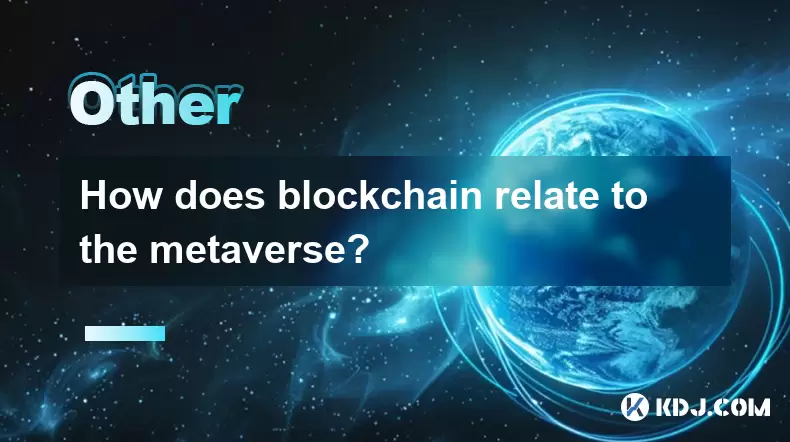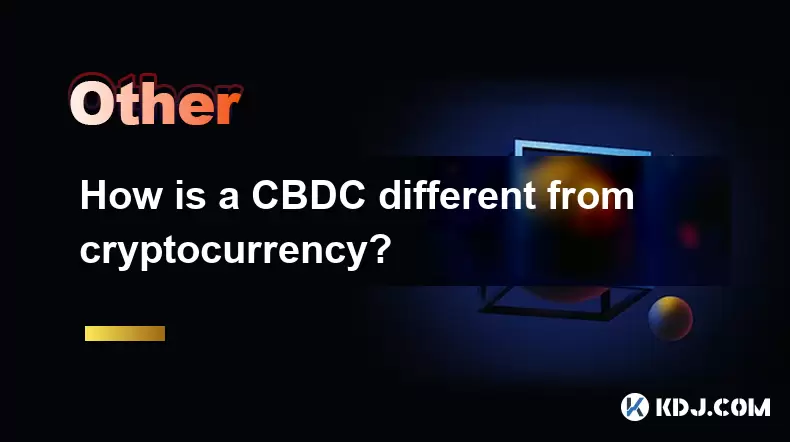-
 Bitcoin
Bitcoin $119000
-2.27% -
 Ethereum
Ethereum $4642
-2.43% -
 XRP
XRP $3.115
-4.19% -
 Tether USDt
Tether USDt $1.001
0.10% -
 BNB
BNB $850.0
-0.95% -
 Solana
Solana $197.3
-4.28% -
 USDC
USDC $0.0000
0.04% -
 Dogecoin
Dogecoin $0.2306
-6.16% -
 TRON
TRON $0.3582
-2.27% -
 Cardano
Cardano $0.9500
-4.89% -
 Hyperliquid
Hyperliquid $48.30
2.90% -
 Chainlink
Chainlink $22.67
-3.93% -
 Sui
Sui $3.852
-4.04% -
 Stellar
Stellar $0.4297
-5.22% -
 Bitcoin Cash
Bitcoin Cash $599.5
-1.55% -
 Ethena USDe
Ethena USDe $1.001
0.05% -
 Hedera
Hedera $0.2554
-5.13% -
 Avalanche
Avalanche $25.19
-0.28% -
 Litecoin
Litecoin $121.8
-6.44% -
 UNUS SED LEO
UNUS SED LEO $9.579
3.40% -
 Toncoin
Toncoin $3.445
-4.22% -
 Shiba Inu
Shiba Inu $0.00001307
-5.28% -
 Uniswap
Uniswap $11.05
-5.13% -
 Polkadot
Polkadot $4.041
-5.05% -
 Dai
Dai $0.0000
0.01% -
 Bitget Token
Bitget Token $4.666
-2.50% -
 Cronos
Cronos $0.1577
-5.09% -
 Ethena
Ethena $0.7392
1.46% -
 Aave
Aave $312.8
-5.12% -
 Pepe
Pepe $0.00001118
-7.76%
How does blockchain relate to the metaverse?
Blockchain enables secure ownership, decentralized identity, and interoperable economies in the metaverse through NFTs, smart contracts, and DAOs, empowering users with true digital property rights and control.
Aug 13, 2025 at 11:35 am

Understanding the Role of Blockchain in the Metaverse
The metaverse represents a collective virtual shared space, created by the convergence of virtually enhanced physical reality, augmented reality (AR), virtual reality (VR), and the internet. Within this digital universe, users interact with each other and digital environments through avatars. Blockchain technology serves as the foundational infrastructure that enables trust, ownership, and interoperability in the metaverse. Without blockchain, the metaverse would lack mechanisms for secure digital asset ownership, transparent transactions, and decentralized governance.
One of the most critical contributions of blockchain is the creation and management of digital assets using non-fungible tokens (NFTs). These NFTs represent unique items such as virtual real estate, clothing for avatars, or digital art. Because each NFT is recorded on a blockchain, its ownership is verifiable, immutable, and transferable across platforms. This ensures that users truly own their digital possessions, a concept often referred to as digital property rights.
Decentralized Identity and User Autonomy
In traditional online platforms, user identities and data are controlled by centralized entities. Blockchain introduces decentralized identity (DID) systems that allow users to maintain control over their personal information and digital footprint within the metaverse. A user’s DID, stored on the blockchain, can be used across multiple metaverse platforms without relying on third-party authentication.
This means a user can log into various virtual worlds using a single, secure blockchain-based identity. The private keys associated with this identity are held solely by the user. This prevents data monopolization and reduces the risk of identity theft. Self-sovereign identity, powered by blockchain, ensures that users are not locked into a single ecosystem and can move freely with their credentials and reputation.
Tokenization of Virtual Economies
The metaverse features complex virtual economies where users earn, spend, and trade digital currencies and assets. Blockchain enables the tokenization of these economies through cryptocurrencies and utility tokens. Platforms like Decentraland and The Sandbox use their native tokens (MANA and SAND, respectively) to facilitate transactions for land purchases, services, and in-game items.
These tokens operate on public blockchains—typically Ethereum—ensuring transparency and auditability. Smart contracts govern how tokens are distributed, used, and exchanged. For example, creators can earn cryptocurrency by selling virtual goods, and players can be rewarded for participating in games or events. The integration of blockchain ensures that these economic activities are secure, transparent, and resistant to manipulation.
To participate in a tokenized metaverse economy, users must follow these steps:
- Set up a cryptocurrency wallet compatible with the metaverse platform (e.g., MetaMask for Ethereum-based platforms).
- Acquire the platform’s native token through a cryptocurrency exchange.
- Connect the wallet to the metaverse application.
- Begin purchasing virtual assets or services using the token.
Each transaction is recorded on the blockchain, providing a permanent and tamper-proof history.
Interoperability Across Virtual Worlds
A major challenge in the early stages of the metaverse is fragmentation—each virtual world operates in isolation. Blockchain promotes interoperability by allowing digital assets and identities to move across different platforms. Since NFTs and tokens adhere to standardized protocols (e.g., ERC-721 and ERC-20 on Ethereum), they can be recognized and used in multiple metaverse environments.
For example, a virtual jacket purchased in one world as an NFT can be worn by the same user’s avatar in another compatible world. This cross-platform functionality depends on shared blockchain standards and open APIs. Developers can build applications that interact with multiple metaverses, creating a more cohesive digital experience.
Achieving true interoperability involves:
- Using common blockchain standards for digital assets.
- Implementing cross-chain bridges to transfer assets between different blockchains.
- Designing metaverse platforms with open-source protocols.
- Establishing governance frameworks that allow communities to agree on interoperability rules.
This interconnectedness is only possible because blockchain provides a neutral, decentralized ledger accessible to all participants.
Decentralized Governance and Community Ownership
Many metaverse platforms are adopting decentralized autonomous organizations (DAOs) to give users a voice in platform development and policy-making. DAOs operate on blockchain and allow token holders to vote on proposals, such as changes to the virtual environment, revenue distribution, or new features.
For instance, in Decentraland, users who hold MANA tokens can participate in governance by submitting or voting on improvement proposals. This model shifts control from centralized corporations to the community, fostering a more democratic and user-driven ecosystem. Smart contracts execute the outcomes of votes automatically, ensuring transparency and reducing the potential for corruption.
To engage in DAO governance:
- Acquire and hold the platform’s governance token.
- Join the official governance forum or platform (e.g., Snapshot).
- Review active proposals and cast votes using your connected wallet.
- Monitor the execution of approved proposals on-chain.
This system empowers users to shape the evolution of the metaverse they inhabit.
Security and Immutability of Transactions
Blockchain’s inherent characteristics—immutability, transparency, and cryptographic security—make it ideal for securing metaverse transactions. Every action, from purchasing land to trading items, is recorded on a distributed ledger. This prevents fraud, double-spending, and unauthorized alterations.
Smart contracts further enhance security by automating agreements without intermediaries. For example, a smart contract can release payment to a digital artist only after a custom avatar is delivered. These contracts are self-executing and cannot be altered once deployed, ensuring fairness and reliability.
Users benefit from:
- Transparent transaction history visible to all participants.
- Reduced reliance on third parties for dispute resolution.
- Protection against counterfeit digital goods through verifiable NFTs.
- Secure peer-to-peer exchanges without centralized oversight.
This level of trust is essential for a functioning, large-scale virtual economy.
Frequently Asked Questions
Can I use the same NFT across different metaverse platforms?
Yes, if the platforms support the same blockchain standards (e.g., ERC-721) and have interoperability agreements. For example, an NFT minted on Ethereum can be used in any metaverse that recognizes Ethereum-based tokens, provided the platform allows external asset imports.
How do I prove ownership of a virtual land parcel in the metaverse?
Ownership is recorded as an NFT on the blockchain. You can verify ownership by checking the NFT’s details in your cryptocurrency wallet or on a blockchain explorer like Etherscan. The wallet address that holds the NFT is the legal owner.
Is it possible to earn real money in a blockchain-based metaverse?
Yes. Users can earn cryptocurrency by selling virtual goods, renting land, creating experiences, or participating in platform governance. These tokens can be exchanged for fiat currency on cryptocurrency exchanges.
What happens if I lose access to my crypto wallet in the metaverse?
Losing access means losing control of your digital assets and identity. There is no central authority to recover your wallet. It is crucial to securely back up your seed phrase and use hardware wallets for added protection.
Disclaimer:info@kdj.com
The information provided is not trading advice. kdj.com does not assume any responsibility for any investments made based on the information provided in this article. Cryptocurrencies are highly volatile and it is highly recommended that you invest with caution after thorough research!
If you believe that the content used on this website infringes your copyright, please contact us immediately (info@kdj.com) and we will delete it promptly.
- Kazakhstan's Crypto Leap: Bitcoin ETF and Central Asia's Digital Finance Future
- 2025-08-13 12:45:19
- BlockDAG Presale Blazes Past $371M: Fundraising Frenzy Fuels Crypto Sensation
- 2025-08-13 13:05:21
- Meme Coins: Chasing the 2025 Surge – Which Will Moonshot?
- 2025-08-13 10:25:23
- Bitcoin's Wild Ride: Rally, Pullback, and What's Next
- 2025-08-13 10:25:23
- Bitcoin, Bitmax, and Institutional Demand: A New Era of Crypto Investment
- 2025-08-13 10:45:12
- Solana, ROAM, and Airdrops: What's the Buzz in 2025?
- 2025-08-13 11:35:13
Related knowledge

How does blockchain enable Web3?
Aug 13,2025 at 11:35am
Understanding the Role of Blockchain in Web3 InfrastructureBlockchain serves as the foundational layer upon which Web3 is built, enabling a decentrali...

How is a CBDC different from cryptocurrency?
Aug 12,2025 at 09:21am
Understanding the Core Nature of CBDCsA Central Bank Digital Currency (CBDC) is a digital form of a country’s sovereign currency, issued and regulated...

What is a CBDC (Central Bank Digital Currency)?
Aug 13,2025 at 11:36am
Understanding the Concept of a Central Bank Digital CurrencyA CBDC (Central Bank Digital Currency) is a digital form of a country’s fiat currency that...

How can zero-knowledge proofs enhance privacy on a blockchain?
Aug 12,2025 at 02:15am
Understanding Zero-Knowledge Proofs in Blockchain ContextZero-knowledge proofs (ZKPs) are cryptographic protocols that allow one party (the prover) to...

How does blockchain governance work?
Aug 13,2025 at 11:35am
Understanding Blockchain GovernanceBlockchain governance refers to the mechanisms and processes through which decisions are made about the development...

What is on-chain vs. off-chain data?
Aug 13,2025 at 11:35am
Understanding On-Chain Data in CryptocurrencyOn-chain data refers to all information that is permanently recorded and stored directly on a blockchain....

How does blockchain enable Web3?
Aug 13,2025 at 11:35am
Understanding the Role of Blockchain in Web3 InfrastructureBlockchain serves as the foundational layer upon which Web3 is built, enabling a decentrali...

How is a CBDC different from cryptocurrency?
Aug 12,2025 at 09:21am
Understanding the Core Nature of CBDCsA Central Bank Digital Currency (CBDC) is a digital form of a country’s sovereign currency, issued and regulated...

What is a CBDC (Central Bank Digital Currency)?
Aug 13,2025 at 11:36am
Understanding the Concept of a Central Bank Digital CurrencyA CBDC (Central Bank Digital Currency) is a digital form of a country’s fiat currency that...

How can zero-knowledge proofs enhance privacy on a blockchain?
Aug 12,2025 at 02:15am
Understanding Zero-Knowledge Proofs in Blockchain ContextZero-knowledge proofs (ZKPs) are cryptographic protocols that allow one party (the prover) to...

How does blockchain governance work?
Aug 13,2025 at 11:35am
Understanding Blockchain GovernanceBlockchain governance refers to the mechanisms and processes through which decisions are made about the development...

What is on-chain vs. off-chain data?
Aug 13,2025 at 11:35am
Understanding On-Chain Data in CryptocurrencyOn-chain data refers to all information that is permanently recorded and stored directly on a blockchain....
See all articles

























































































